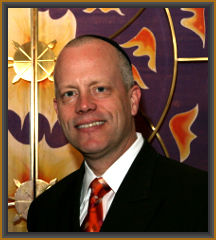
 |
October 7, 2022 (12 Tishrey 5783) The Four Species of Sukkot Dear Holy Friends, I hope this correspondence finds you well and in good health. Thank you so much for joining us for an inspirational davening during the High Holy Days. We look forward to you joining us this Shabbat morning at 10:30am for our in-person services in the sanctuary, which will also be available on our regular zoom prayer link. Additionally, Monday and Tuesday morning we will celebrate Sukkot, again, both in-person at 10:15am and via Zoom. Please come support our minyan! Sukkot is a fantastic holiday with many customs and commandments. In addition to eating and/or sleeping in the Sukkah, we have the four species of lulav, etrog, myrtle and willow, as well as the only time in the Torah whereby you are commanded to be happy! Sounds fun! The four species are certainly the most distinguished items in the sukkah. The Torah commands us in the Book of Leviticus, chapter 23 verse 40: “And ye shall take you on the first day the fruit of goodly trees, branches of palm trees, boughs of thick trees and willows of the brook and ye shall rejoice before the Lord your God for seven days.” In the Midrash, the four species symbolize four types of Jews, with differing levels of Torah knowledge and observance. One Jew may have neither Torah wisdom nor deeds; another has both wisdom and performs actions, and the other two folks may have only wisdom or deeds. Bringing them together represents our unity as a nation—despite our external differences. The etrog represents a person who studies Torah and fulfills the mitzvot, the lulav represents one who studies Torah but does not perform mitzvot, the myrtle represents one who fulfills mitzvot but does not study Torah, and the willow represents a Jew who neither studies Torah nor observes mitzvot. It is interesting that the etrog, which symbolizes both the person who studies Torah and fulfills mitzvot, does not stand alone in the fulfillment of this mitzvah. The etrog must be joined with the other species. That is a powerful symbol, to be sure: Every Jew, no matter what his level of Torah knowledge or practice, must see his fellow Jew as forming a unity, each of us belonging to a collective that shares a Divine spark—all of us created in His image. As we enter the Shabbat and the holiday season, I pray that we continue to appreciate all members of our community and our people, so that we can, in fact, come before Hashem with a sense of unity and wholeness as we celebrate the Chag. That attainable goal, once fulfilled, will certainly propel us towards a sense of joy and happiness, as the Torah commands Shabbat Shalom and Chag Sameach Rabbi Eric Wasser, EdD, Hon.DM
|